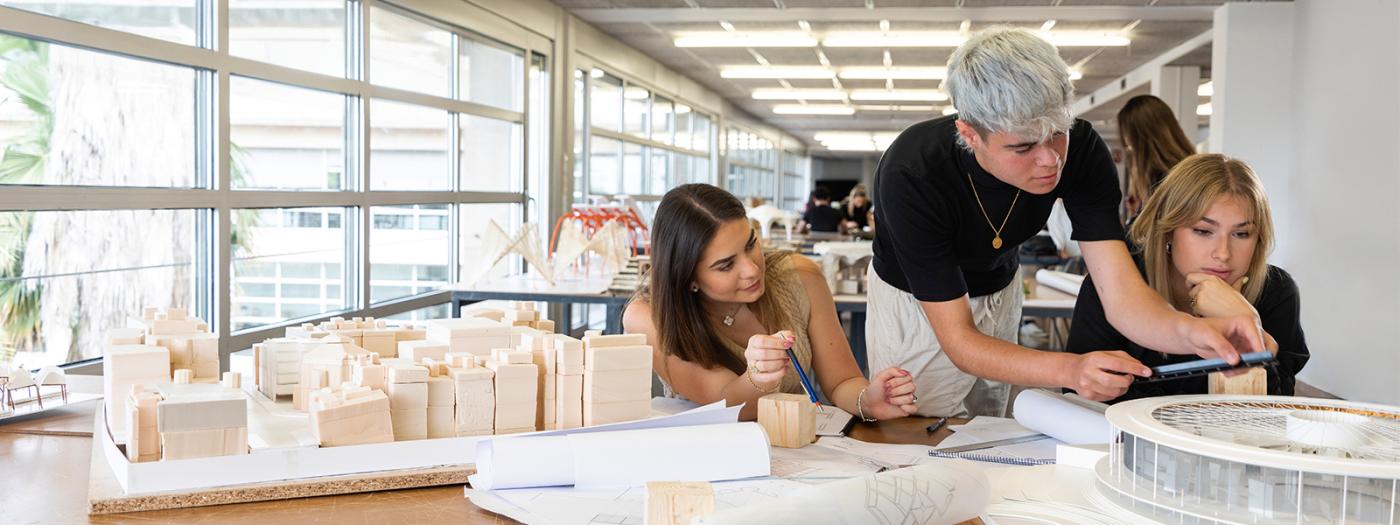Titular Professors
Basic mathemathic knowledge.
In short, at the end of the structural training, it is intended that, in addition to being able to calculate it, they will be able to design it, developing the structure with criteria and succes, understood as consubstancial with the project and not in a disintegrated and independent manner. Above all, they must achieve a sufficient degree of training to be able to carry out structural typological approaches for their architectural projects.
Introduction to statics
Introduction to vector quantities
Forces and static equilibrium
Types of forces: actions and reactions
The mass center
Introduction to structure design
Structural typology
Structural static análisis
Calculation accuracy
Calculation methodology
Modeling and design process
Relationships between stresses, strains and materials
Identification of the difficulties
General diagrams and schematics
Basic pre-dimensioning
Problems and exercices
Laboratory practices
Seminar
Self Paced Learning
Project-based learning
Flipped Classroom
Peer Instruction
Challenge-based learning
Master class
ORDINARY CALL
Attendance. In order to be eligible for evaluation in the ordinary exam, a mínimum attendance of 50% is required, after which the remaining attendance will be taken into account.
Homework. Exercices that the student does at home, 20%
Exercices/challenges done in class. Exercices or challenges that the student does in class indibidually or in pairs, 20%.
Exam. Exam of the whole program at the end of the course, 55%. The mínimum grade for the average is 5.
EXTRAORDINARY CALL
Students take an exam on the entire program at the end of the year.
Addleson, L. Materiales para la construcción. Vol. 1. Barcelona: Reverté, 1991.
Bedford-Fowler. Estática. Buenos Aires: Addison-Wesley, 1996.
R. P. Feynman, R. B. Leighton i M. Sands, Físíca, Adison-Wesley Iberoamericana
Tipler. Física. Barcelona: Reverté, 1994.
Brufau, R.; Batlle, M. Estructuras I. (vol. 1, 2, 3). Apunts ETS. Arquitectura del Vallès.
Corbou. Resistencia de materiales. Editorial Aguilar.
López Almansa, F.; Urbano, J. Introducció a les estructures. Edicions UPC.
Navés, F.; Llorenç, M. Càlcul d´estructures. Edicions UPC.
Rodríguez Avial. Resistencia de materiales.
Stiopin. Resistencia de materiales. Editorial Mir.
Timoshenko, Y. Resistencia de materiales. Editorial Espasa Calpe.
Timoshenko, Y. Elementos resistencia de materiales. Editorial Montaner.
Torroja, E. Razón de ser de los tipos estructurales. Instituto Eduardo Torroja de la Construcción y del Cemento.
Gordon, J. E. Structures: or Why things don´t fall down. Nova York: Da Capo, 1981.
Salvadori, M.; Heller, R. Estructuras para arquitectos. Buenos Aires: CP67, 1992.
AITIM; Argüelles, R.; Arriaga, F. Estructuras de madera. Diseño y cálculo.
AITIM; Argüelles, R.; Arriaga, F. La estructura metálica hoy. Librería Técnica Bellisco.
Calavera, J. Cálculo y estructuras de Cimentación. INTEMAC.
Calavera, J. Muros de contención y muros de sótano. INTEMAC.
Jiménez, P.; García, A.; Morán, F. Hormigón armado. Gustavo Gili.
Martínez, J.; Ortiz, J. Construcción Mixta. Hormigón-Acero. Rueda.
Prontuario Ensidesa.
Shueller, W. The Vertical Building Structure.
